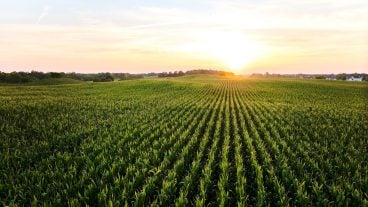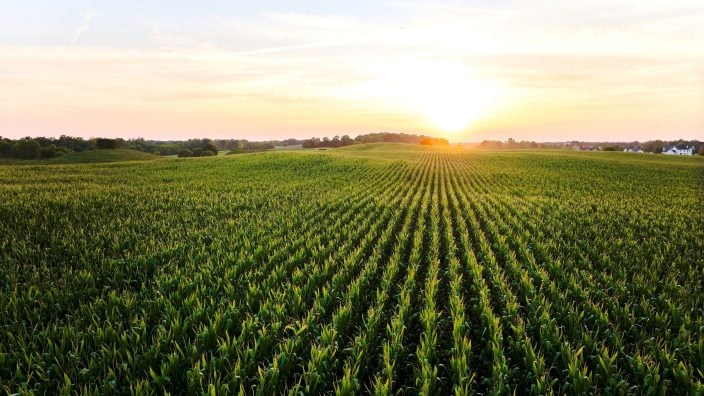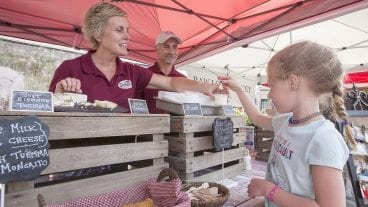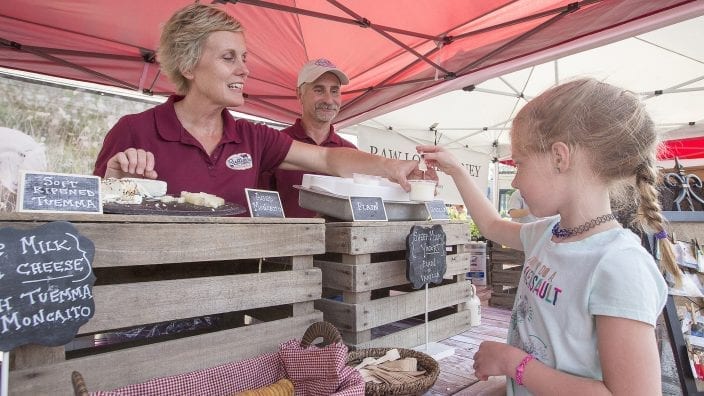Farmer’s Guide to Trucking Regulations available to Ohio Farm Bureau members
The guide includes a farm driver checklist, overview of state and federal regulations and exemptions, CDL qualifications and more.
Read More
Locally we haven’t seen a lot of dairy farms go out of business the past couple of years. One reason may be that the herds left in the area are the most efficient and able to stand the recent low milk prices.
Some improvements have been noted in milk prices recently. Cow numbers are not increasing like they did, and production from each cow has been fairly stable. This suggests that overall milk production in the U.S. is experiencing small increases. This helps keep milk supply and overall demand in balance.
Wisconsin, one of the top dairy states in the country, has seen a substantial decline in dairy herds. From January through July of this year, the state had 491 herds go out of business. While that many herds sold out, cow numbers did not decline as fast. This indicates that many of the cows in those herds were sold to neighbors.
One local herd that I know about that sold out recently sold their herd to a dairy farm in New York state. The cows remained in production but not in Ohio. Often when a herd gets sold, it goes as a group to another farm, locally or out of state.
Ohio is listed with 3,346 dairy herds. Of those, there were herds of 50 to 99 cows on 665 farms. Because of the large Amish population in Ohio, we also have a number of herds below the 50-cow numbers.
We also have 179 herds in the 200- to 499-cow range and 75 herds in 500 or more cow size in the state. We don’t have anything like the 3,000- to 5,000-cow herds that are in business in some of the western states.
Wayne County is listed with 184 dairy herds, the most of any county in Ohio. Exact figures for Trumbull County were not available but are estimated to be below 50 herds. I can remember when there were 300 to 350 dairy herds just in the county. They were up and down all the side roads. Many of them were small and did not provide enough money for a reasonable family living.
On Aug. 12, USDA released its report and projections for the fall harvest. The report caused more questions and confusion than it gave answers. The report projected increases for both corn and soybean acres and yields. This, in turn, has caused decreases in possible prices for this fall. Farmers were not happy with the report, and other agencies have disagreed with USDA estimates.
Also farmers are wondering what fall weather will bring. Will we have an early frost? Or will we be fortunate enough for frost to be delayed? Both yields and prices depend on what Mother Nature deals to us, both locally and across the country.
With many fields of corn planted about a month late, most farmers need all the time they can get for the crop to reach maturity. Soybeans are in the same situation, although they can mature earlier than corn. Much of the price of some foods depends on what happens with the weather this fall.
Also, farmers hope for dry weather conditions for harvest this fall. Harvesting corn and beans in the mud is no fun and much more difficult than when fields are dry and equipment doesn’t get stuck.
So farmers wait and wonder. We’ll hope and pray for a later, dry harvest with some good yields.
Submitted by John Parker, who is retired from The Ohio State University and is an independent writer for the local Farm Bureau.
OFBF Mission: Working together for Ohio farmers to advance agriculture and strengthen our communities.


The guide includes a farm driver checklist, overview of state and federal regulations and exemptions, CDL qualifications and more.
Read More


Ohio Farm Bureau provides opportunities, platforms and resources to help you develop your voice in the industry and give farmers a seat at the table with leaders and legislators.
Read More

The emergency fuel waiver to allow the sale of summer gasoline blends containing 15% ethanol will lengthen the period during which Americans can continue buying E15 from June 1 to Sept. 15.
Read More

The Small-Scale Food Business Guide covers federal and state regulations for selling food products such as raw meat, dairy, eggs, baked goods, cottage foods, fruits and vegetables, honey and more.
Read More

New resources and technology are broadening the different types of sales tools and strategies available to farmers.
Read More

ODA will enroll 500,000 acres into the program for a two-week sign-up period, beginning April 22, 2024, through May 6, 2024. Contact local SWCD offices to apply.
Read More

Katie Share of Columbus has been named ExploreAg and Youth Development Specialist for Ohio Farm Bureau.
Read More

Mary Klopfenstein of Delphos has been named Young Ag Professional and Ag Literacy Program Specialist for Ohio Farm Bureau.
Read More

The plan has been updated to give sole proprietors access to more rate stability and a smart solution that offers potential savings on health care.
Read More

The American Farm Bureau Federation, in partnership with Farm Credit, is seeking entrepreneurs to apply online by June 15 for the 2025 Farm Bureau Ag Innovation Challenge.
Read More